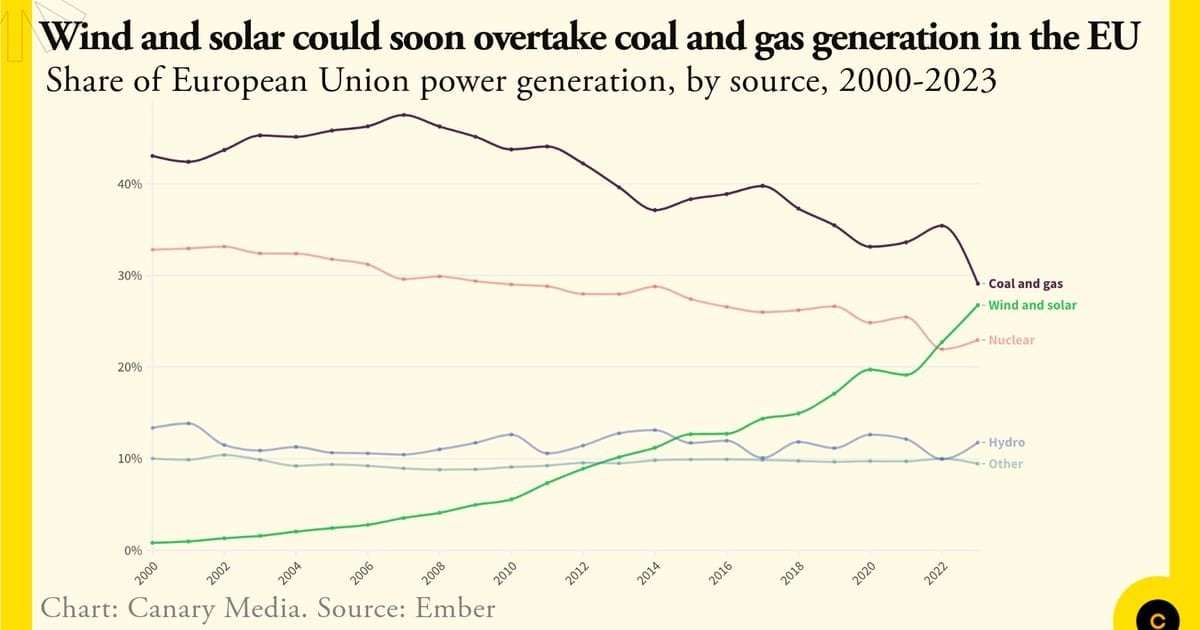European countries also saw examples of renewables-heavy power systems working reliably last year. In May, Spain ran on 100 percent renewables for nine hours; in October, Greece did the same for five hours. In November, Portugal ran on 100 percent renewables for 149 hours — or six days in a row.
Hydropower and nuclear generation also rebounded from lows in 2022, pushing overall carbon-free electricity to more than two-thirds of the EU’s electricity makeup. Over the same timeframe, fossil fuel generation fell by a record 19 percent. It now generates just one-third of the region’s power. Coal plummeted by a record 26 percent last year as more plants shuttered, while gas — which has been declining for the past four years — also saw a sharp 15 percent drop.
Looking ahead, the power sector will need to nearly double the current share of renewable generation if it is to keep up with both emissions-reduction goals and the EU’s legally mandated Renewable Energy Directive. The latter requires all member states to produce at least 42.5 percent of their power from renewables by 2030.
In other words, the upward trajectory of renewables in Europe is going to keep growing.
